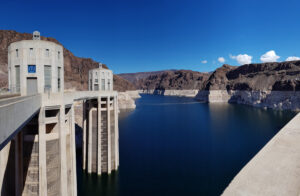Bold Actions for People, Farms, and the Environment
The United States Bureau of Reclamation is commencing a process aimed at modernizing the operations of the federal Central Valley Project (CVP). For decades, the approaches to protecting the fish and wildlife dependent on the Bay-Delta watershed and estuary have been species-by-species and stressor-by stressor. Those approaches have failed. The effort by Reclamation responds to a consensus view within the scientific community and policy direction from the State of California – that, to improve protection and enhancement of fish and wildlife, comprehensive approaches are required.
The United States Bureau of Reclamation recently completed an important part of that process and issued what is known as a biological assessment. In simple terms, a biological assessment evaluates the possible effects that a project or action may have on a species listed as threatened or endangered as well as critical habitat protected by the Endangered Species Act. The assessment leads to a set of rules to help protect threatened or endangered species, in this case, salmon, Delta smelt, and other fish dependent on the Bay-Delta.
Reclamation’s biological assessment advances a proposed operation that responds to science and policy. It seeks to establish new rules that allow for operation of the CVP and SWP to meet the water supply needs of the people in urban and agricultural communities, within a suite of actions that address directly the many physical, biological, and chemical factors that adversely affect the health of the ecosystem.

This biological assessment process is a critical step in protecting our environment and our water supply. The biological assessment looks back at what we’ve learned and applies it to future measures. In the case of the Bay-Delta, what we have been doing hasn’t worked as the health of the Bay-Delta continues to decline, with important species, like salmon and smelt continuing their death spiral to a point of near extinction. Without undertaking this process and without the bold step by Reclamation, we remain mired in mistakes of the past.
Release of the biological assessment is one effort of many required to improve conditions for fish and wildlife and make water supply more reliable. In December, California’s Director of the Department of Fish and Wildlife, Chuck Bonham, and Director of the Department of Water Resources, Karla Nemeth, laid out another effort, a far-reaching plan that incorporates what we have learned from past errors and current studies and establishes an adaptive management program designed to react to new science for the benefit of the ecosystem as a whole. This comprehensive solution provides stable funding for habitat restoration and a more comprehensive approach to fish protection and enhancement, including efforts to reduce predation, eliminate passage barriers, and increase hatchery production. Now, all parties need to commit to moving beyond incremental change and take bold action by finalizing the voluntary agreements.

Governor Gavin Newson is the right person to lead California into a bold new future for people and the environment. He joined former Governor Brown and Senator Feinstein in supporting a comprehensive solution. The Farm Water Coalition had the opportunity in the not-too-distant past to host a tour into the heart of the San Joaquin Valley for then-Lieutenant Governor Newsom. We were impressed with his grasp of the issues, not only with respect to agriculture but for rural communities that depend on the farm economy and on the wildlife areas that partner with irrigation districts to improve water supply reliability for everyone.
Governor Newsom has been characterized as someone with big ideas and a willingness to take bold action. That’s what California needs as we look ahead to a new, overarching approach to protecting and enhancing the Bay-Delta and the water supplies of those in urban and agricultural areas as well as the willingness of locals to invest in that future.


